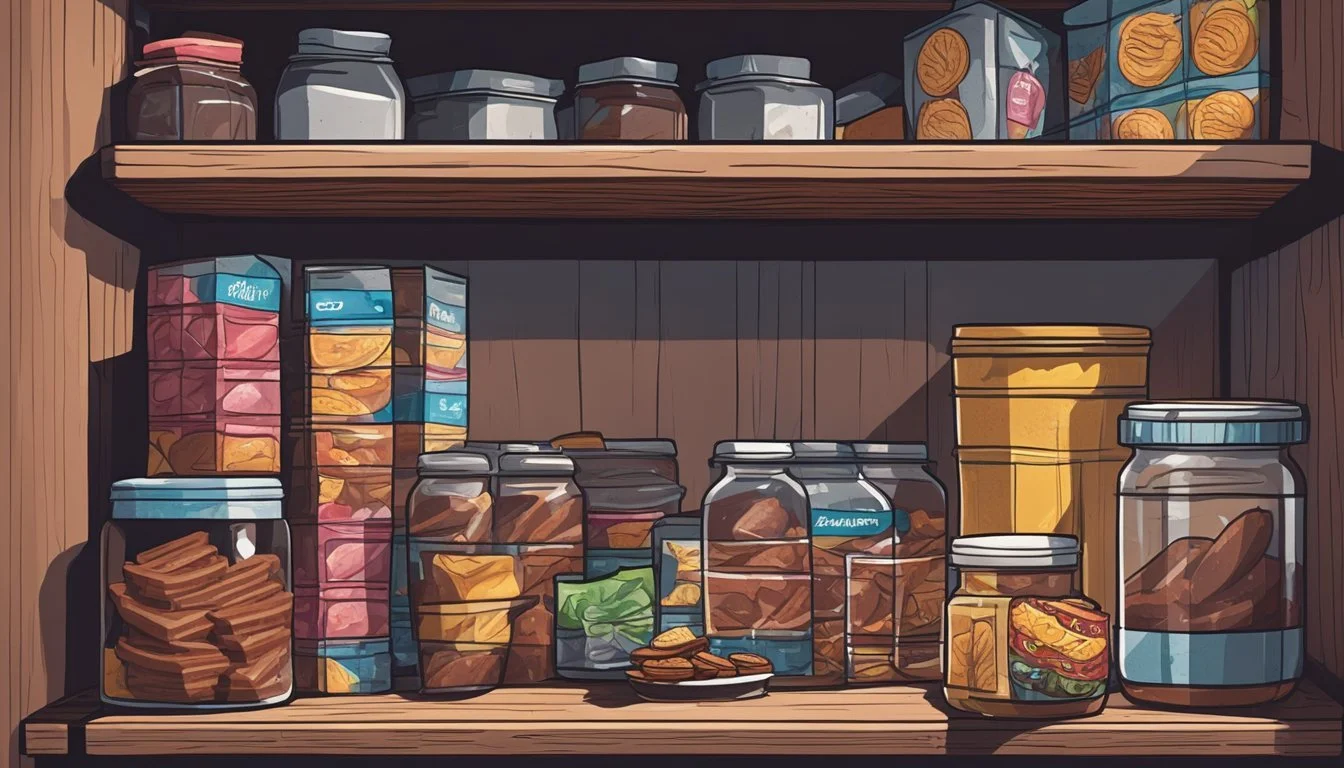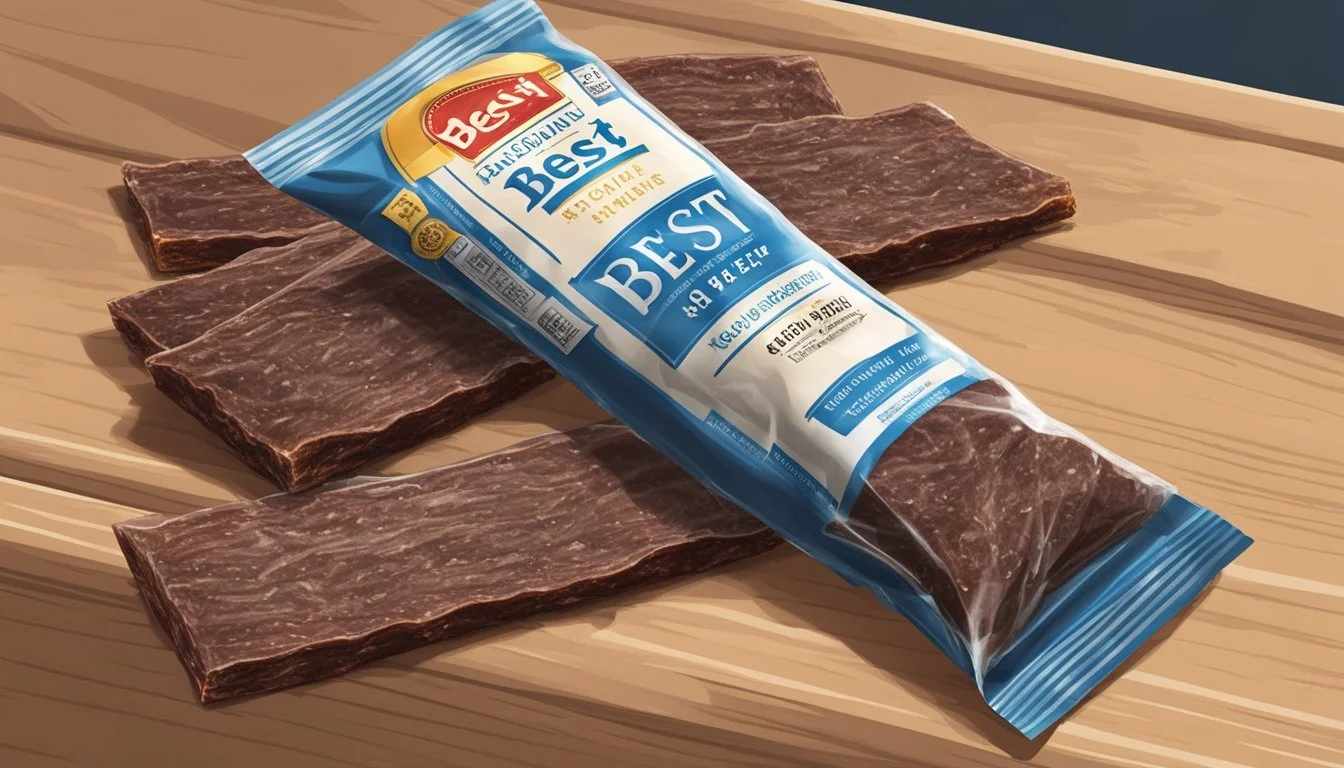Is it Safe to Eat Expired Beef Jerky?
Understanding Food Safety Limits
Beef jerky is a popular snack known for its long shelf life, largely due to the dehydration process it undergoes to preserve meat. However, like all food products, beef jerky comes with a "best by" date, which can cause some confusion for consumers. This date is an indication from manufacturers of the period during which the product is expected to retain its best quality. It's important to distinguish this from an expiration date; beef jerky doesn't typically come with a definitive point after which it is considered unsafe to eat.
Evaluating the safety of beef jerky post its "best by" date requires a bit of knowledge about how preservation works in jerky and the signs of spoilage. The reduced moisture content in beef jerky inhibits the growth of microorganisms, which is why it can last for extended periods when stored properly. To ensure beef jerky is safe to consume after the printed date, one should inspect the product for any off-odors, changes in texture, or visible signs of mold. These indicators are more reliable than the date on the package when assessing its safety.
The quality of beef jerky past the "best by" date can also be a factor for consideration. While it may be safe to eat, the flavor and texture may not be optimal. Consumers should store beef jerky in cool, dry conditions to maintain its quality and extend its usability. When these storage guidelines are followed, unopened beef jerky can maintain its quality for up to a year in the pantry, and if refrigerated, it can last even longer, making it a durable option for a protein-rich snack.
Understanding Beef Jerky and Expiration Dates
Beef jerky is a popular protein-rich snack made from lean cuts of beef that are marinated, seasoned, and dried to remove most of the moisture. This process significantly extends the jerky's shelf life compared to fresh meat. Typically, beef jerky packaging provides a best-by date rather than a strict expiration date. This date is an indication of how long the product is expected to retain its optimal quality and freshness.
The shelf life of unopened beef jerky varies:
Pantry: Up to 1-2 years
Refrigerator: Can extend beyond 2 years
Food Safety and quality are two important considerations when assessing whether beef jerky is safe to consume past its best-by date. While the low moisture content and preservatives help to prevent spoilage, several factors can affect the longevity of jerky:
Storage Conditions: Cool, dry places away from direct sunlight promote longevity.
Packaging Integrity: An unbroken seal is crucial to prevent exposure to air and moisture.
Consumers should inspect the jerky for signs of spoilage such as:
Odd odors
Mold growth
Discoloration
If any of these signs are present, the jerky should not be consumed. It's worth noting that the texture and flavor of beef jerky may diminish over time, even if it remains food-safe. While dryness and hardness can be expected as jerky ages, drastic changes may indicate a decline in quality. When in doubt, it's safest to err on the side of caution and discard beef jerky that shows signs of deterioration, regardless of the best-by date.
Assessing the Safety of Expired Beef Jerky
When evaluating the safety of expired beef jerky, one must examine visual signs, smell, and texture before tasting. These indicators help determine if the jerky is spoiled or still maintains its quality despite the elapsed expiration date.
Visual Inspection
A visual examination should be the first step. One should look for noticeable signs of spoilage such as:
Discoloration: Changes in color can suggest quality loss or spoilage.
Mold: Any visible mold growth means the jerky is not safe to consume.
Olfactory Evaluation
The smell of the beef jerky is a reliable indicator of its condition. Fresh jerky should have a rich, meaty aroma, and any deviation might suggest spoilage. Be alert for:
Rancid odors: A rancid smell indicates that the fats in the beef jerky have oxidized, and the product is no longer safe to eat.
Texture and Taste Analysis
Lastly, if the jerky appears and smells normal, test the texture before proceeding to taste. Spoiled jerky may have a slimy texture, signaling that it should not be consumed. When sampling, a small nibble can be enough to assess:
Taste: The jerky should taste like its intended flavor, and any off or unfamiliar flavors could be signs of spoilage.
If beef jerky fails any of these assessments, it should be discarded to avoid possible foodborne illnesses.
Impact of Storage Conditions on Beef Jerky
The longevity and safety of beef jerky are heavily influenced by its storage conditions. Factors such as temperature, humidity, and exposure to air play a critical role in determining the shelf life of this dried meat snack.
Proper Storage Methods
To maintain the quality of beef jerky, it should be stored in a cool, dry place such as a pantry. Once opened, sealing it in an airtight container is essential to keep out moisture and other contaminants. For homemade beef jerky, lacking in preservatives, these methods are even more crucial to prevent spoilage.
Refrigeration: Placing beef jerky in the refrigerator can help preserve its freshness, especially once the packaging has been opened.
Freezer: For long-term storage, a freezer can extend the shelf life significantly, up to a year for both homemade and store-bought varieties.
Effects of Storage on Shelf Life
The shelf life of beef jerky directly depends on its storage conditions.
Temperature: Warmer environments can accelerate the spoilage process, increasing the risk of bacteria growth.
Humidity: High humidity levels can introduce moisture to the jerky, potentially leading to mold and a shorter shelf life.
Air Exposure: Oxygen can cause fats and proteins in the jerky to oxidize, leading to rancidity. Vacuum-sealing helps in reducing air exposure.
When stored properly, commercial beef jerky can last up to one year, while homemade versions typically have a shelf life of one to two months. After opening, beef jerky's shelf life diminishes, and it is best consumed within a few weeks when kept in ideal conditions.
Health Considerations When Eating Expired Jerky
When considering the safety of consuming expired beef jerky, it's important to understand the potential health risks associated with bacterial growth that can lead to various foodborne illnesses.
Bacterial Growth and Foodborne Illnesses
Beef jerky, often having a long shelf life due to its low moisture content and preservatives, can still harbor harmful bacteria over time, especially when stored improperly.
Bacteria: Common bacteria such as Salmonella and E. coli can survive in dried foods, and the risk may increase if jerky is kept in warm, moist environments.
Foodborne Illness: Consumption of contaminated jerky may result in food poisoning, with symptoms such as nausea, vomiting, and fever.
Safe Handling Tips:
Storage: Keep jerky in a cool, dry place away from direct sunlight.
Expiration Date: Observe the "best by" date as a general guide for peak quality.
Inspection: Check for off smells, discoloration, or mold - these are clear indicators that jerky should not be consumed.
Health Risks:
Mild to Severe Symptoms: Eating spoiled jerky can result in a range of symptoms from mild discomfort to severe dehydration and organ damage, depending on the person's health and the level of contamination.
Allergic Reactions: Although not directly related to spoilage, some individuals may react to certain preservatives used in jerky, which can exacerbate health concerns.
By understanding these factors, one can make informed decisions on whether to eat jerky that has passed its expiration date, prioritizing health and safety.
Maximizing the Life Span of Beef Jerky
To prolong the shelf life of beef jerky, it is crucial to focus on proper packaging and preservation, as well as consider advanced dehydration and freezing techniques. These methods are designed to maintain a low moisture content, which is key to preventing spoilage and rancidity.
Packaging and Preservation
Packaging is fundamental in maximizing the life span of beef jerky. Vacuum-sealed packaging is the most effective method to prevent air, which carries moisture and contaminants, from reaching the product. The absence of air not only slows down the degradation process but also helps in maintaining the flavor and texture of the jerky.
Vacuum-sealing: Use a vacuum sealer to remove air from the packaging.
Preservatives: Certain preservatives, such as salt from the curing process or smoke for smoking jerky, contribute to shelf life extension by inhibiting bacterial growth.
Storage: Keep vacuum-sealed beef jerky in a cool, dry place away from direct sunlight to further ensure its longevity.
Freezing and Dehydrating Techniques
Freezing beef jerky can extend its shelf life beyond what typical room temperature storage can offer. However, it's important to freeze the jerky properly to prevent freezer burn, which affects taste and texture.
Freezing: Place the jerky in freezer bags, removing as much air as possible before sealing. Frozen jerky can last for several months to up to 2 years.
Dehydration: Beef jerky's low moisture content is due to the dehydration process during production. Ensuring that homemade jerky is fully dehydrated without being overly dry is a delicate balance that affects both safety and quality. Machines or ovens used for dehydration should maintain a consistent, low heat that adequately removes moisture but doesn't cook the meat.
FAQs on Consuming Expired Jerky
When it comes to consuming expired beef jerky, safety and edibility are primary concerns. This section addresses common questions and offers guidelines to help determine if expired jerky is safe to eat.
Addressing Common Safety Questions
Is it safe to eat beef jerky after the "best by" date? Beef jerky is a dried meat product known for its long shelf-life. The "best by" date indicates when the manufacturer believes the product will be at its best quality. Consuming jerky shortly after this date may be safe if the product has been stored properly—kept in a cool, dry place—and the packaging is intact. However, one should exercise caution, as food safety is paramount.
What are the health risks associated with eating expired beef jerky? If beef jerky has been consumed beyond its expiration and shows signs of spoilage such as mold, off odors, or an unusual texture, it poses health risks. These can range from mild gastrointestinal discomfort to severe foodborne illnesses. It's advised to err on the side of safety and not consume jerky that exhibits these spoilage signs.
Determining Edibility Post-Expiration Date
One can assess the edibility of expired beef jerky by examining the following criteria:
Visual Inspection: Check for mold or discoloration.
Odor Assessment: Sniff for any off or rancid smells.
Texture Check: Feel the jerky. It should be dry, not slimy or sticky.
Sign of Spoilage Suggested Action Mold presence Do not consume Foul odor Do not consume Unusual texture Do not consume
If the jerky passes these checks, it might still be edible despite being past the expiration date. Nonetheless, always prioritize food safety and when in doubt, it is safer to discard the jerky.






